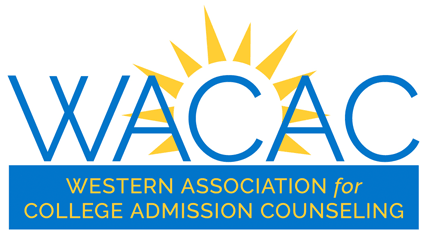In the blink of an eye, recruitment 2014 has passed us by. On the college side, we’ve finally unpacked our suitcases, made our apartments livable again, and are trying to lose those extra lbs that seem to always make it back with us after travel. Most of us have already jumped right in and started reading the thousands of files that we will carefully review over the next few months. These files are filled with stories that will make us laugh, cry, inspire us, and that pull on each and every heart string, reminding us of our own stories, including the things we value most.
Recently, one of our newest staff members sat in on an informational presentation that we offer to visiting families, which I happened to be leading that day. After the presentation, she mentioned that she had shadowed a couple of our colleagues and had found interesting our unique presentation styles and also the sections of our presentation that we each seemed to emphasize a bit more. We all know that our unique backgrounds and experiences inform the way we approach our work, but this, I thought, was the perfect example of how this plays out in our day-to-day work. I am so very fortunate to work in a very diverse office and interact with people on a daily basis that bring to this work their own life stories, experiences, and values. After our conversation, I took some time to reflect on my own presentation. Before my work in admission, my experience was working with first-generation, underrepresented students in college prep programs and other diversity outreach efforts. When presenting, I always explain everything- I talk about the requirements to apply – but also why each component is so important in the process. I spend a great deal of time explaining things that may seem common knowledge to most, like the difference between merit and need-based aid. My presentation style has undoubtedly been influenced by previous work experience and my own experience as a first-generation college student. It is, of course, important that my colleagues and I cover the same information, but the variation in the delivery of the information is what makes our message come alive. If we as individuals can connect with the information we are presenting, our audience will too.
As we start reviewing applications, keeping this in mind will be crucial in making sure we give each applicant a fair and careful evaluation. During a recent staff training, one of my colleagues did an awesome job leading a conversation about what we are each biased towards and against. It was a powerful conversation that allowed us to learn a little bit more about each other, and gave us an opportunity to reflect on how our life experiences may shape our thoughts and sometimes impact our decisions. It is so important that we take a moment each day to reflect, so that we remain engaged with our work and our students. Beware of falling into autopilot mode, as this is when our biases start to make decisions for us and we miss those very important pieces each student’s story.
So, take a few minutes to reflect. What are you biased towards? What are you biased against? Are your biases effecting your work, and if so, what steps can you take to make sure you are keeping your biases in check? Have this conversation with your colleagues, you may learn something new about them.
By Diana Moreno

